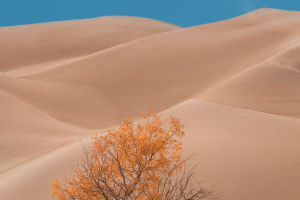Now that the summer season is in full swing, it’s the perfect time for all those keen outdoor explorers to head off on exciting adventures while the good weather lasts, and where better to unleash your adventurous spirit than in the mountainous region of Japan?
And Mount Fuji is perhaps Japan’s biggest attraction, being the country’s highest peak at an impressive 3,776 meters. The mountain is located only 60 miles (96.56 km) from Japan’s capital, Tokyo. There is no proof of how old Mount Fuji is. It is estimated that it may have been formed 2.6 million years, while its base dates from up to 65 million years ago. There is a lot to learn about this majestic Japanese landmark. Here are the top 5 facts about Mount Fuji.
1. It is three volcanoes in one
It might look like it’s just one giant mountain, but Mount Fuji is actually made up of three separate volcanoes: Komitake at the bottom, Kofuji in the middle and Fuji at the top, which is the youngest of the three.
2. You can Get Married on Mount Fuji’s Summit
What better way to declare your undying love for your partner than by scaling Japan’s tallest mountain and tying the knot at the top? It’s a relatively exclusive affair, as Fujisan Hongu Sengen Taisha only offers weddings at its Okumiya shrine at the summit during mountain-climbing season in July and August. Because of the lack of space, wedding parties are limited to a maximum of 10 people. It’s an experience that’s sure to make you feel giddy (hopefully it’s not just altitude sickness), and if the high life isn’t for you, there are hundreds of stunning lakeside locations that include a view of Mount Fuji in the background instead.
3. Women Used to be Forbidden to Climb Mount Fuji
Despite Mount Fuji’s spiritual connection to women, and alleged “maternal aura,” women were strictly forbidden from climbing the mountain for centuries. This was the case for most sacred mountains across Japan. The ban also extended to those in mourning and anyone considered “unsuitable” for whatever reason, but only women were completely disqualified, based solely on their gender. Why, you ask? Well, several excuses were proffered, the main being that women disrupted the sacred ascetic practices required to ascend the mountain. At Mount Fuji, it was said that women — especially beautiful ones — may make Konohana-sakuya-hime angry and cause Mt Fuji to erupt again. To avoid her wrath, women were only allowed access to the mountain as far as the second stage.
4. Five lakes are surrounding the mountain
Mount Fuji not only has two other volcanoes in it but has some magnificent lakes on its base. These five lakes are Kawaguchiko, Yamanakako, Saiko, Motosuko and Shojiko. These lakes are around 1,000 ft (0.3 kilometers) above sea level. It is a glorious sight for the people climbing up. It is also the best viewing point of Mount Fuji. The first lake, Kawaguchiko, is said to be the best suited for tourists because there are other fun activities and amenities for tourists and climbers. The other four lakes are said to be quite unsuitable and are not tourist friendly. Since there is geothermal activity in the area, there are hot springs to bathe in. It’s a perfect relief for those aches and pains after spending the day trekking up the mountain.
5. The Japanese believe Mount Fuji brings good luck
Another fact about the mountain is that the Japanese believe that Fuji represents good luck and good fortune. As per their culture, they have colorful paintings and images of the mountain in public baths and swimming pools. The images are said to bring instantly calm and relaxation to people who see the mountain. A depiction of the mountain erupting is forbidden as being bad luck. The unique shape of the mountain has further influenced Japanese culture by inspiring poetry, music, and art.


